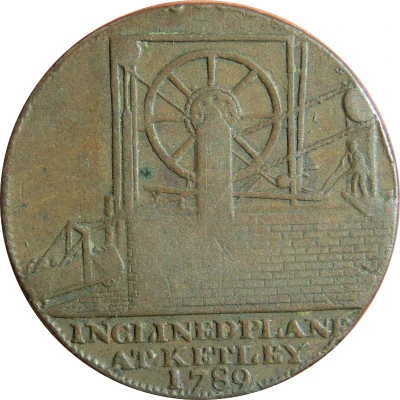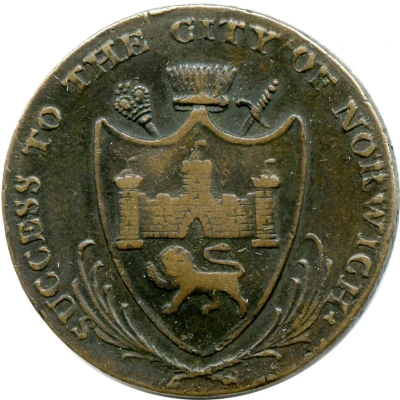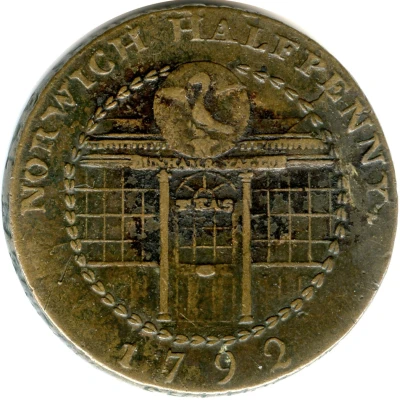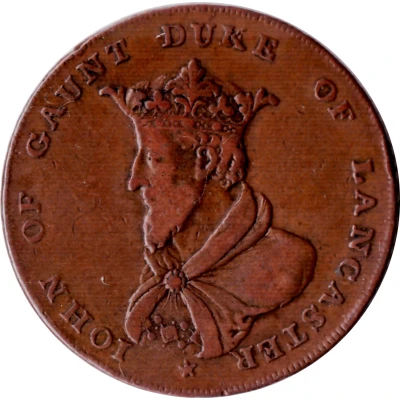
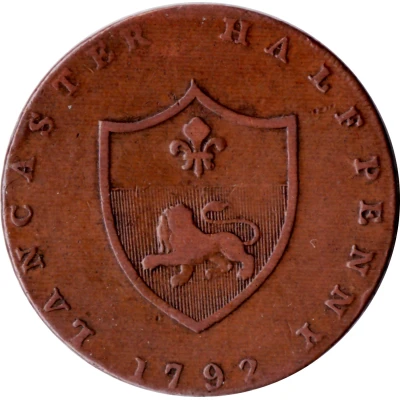

© Bluhawk
½ Penny Lancashire - Lancaster / John of Gaunt
1792 year| Copper | 12.25 g | 29 mm |
| Issuer | United Kingdom (United Kingdom, British Overseas Territories and Crown Dependencies) |
|---|---|
| Type | Token |
| Year | 1792 |
| Value | ½ Penny (1⁄480) |
| Currency | Conder tokens (1787-1797) |
| Composition | Copper |
| Weight | 12.25 g |
| Diameter | 29 mm |
| Thickness | 1.75 mm |
| Shape | Round |
| Technique | Milled |
| Orientation | Coin alignment ↑↓ |
| Demonetized | Yes |
| Updated | 2024-10-09 |
| Numista | N#227837 |
|---|---|
| Rarity index | 79% |
Reverse
Shield of arms with legend around and date below.
Note: line cuts between C and A, and P and E, point of shield between 7 and 9
Script: Latin
Lettering:
LANCASTER HALFPENNY
1792
Edge
Incuse lettering
Lettering: PAYABLE AT THE WAREHOUSE OF THOs WORSWICK & SONS . X .
Comment
The County Town of Lancaster has been represented by one penny and two different halfpenny tokens. The first of the halfpenny token designs was issued in 1791 and shows a portrait of John of Gaunt, Duke of Lancaster.The reverse featured the arms of the City of Lancaster, which takes elements from the Royal Arms of both England and France - the claim to the title of King of France was only relinquished by King George III in 1801 as part of the price paid for the Peace of Amiens.
Many mules and die varieties exist. The tokens were also extensively counterfeited and these copies continued, with various dates, up to 1794. Thomas Worswick was a banker, goldsmith and silversmith, and his premises were in New Street.
Interesting fact
The A Token ½ Penny (Lancashire - Lancaster / John of Gaunt) 1792 from United Kingdom (United Kingdom, British Overseas Territories and Crown Dependencies) made of Copper weighing 12.25 g is an interesting coin because it was issued during a time when there was a shortage of small denomination coins in circulation, and private token issues like this one were used to fill that gap. This coin, in particular, was issued by John of Gaunt, a powerful noble in Lancashire, and features an image of a castle on one side and a shield with the initials "I.G." on the other. It's a unique piece of history that gives us a glimpse into the economic and social conditions of the time.

